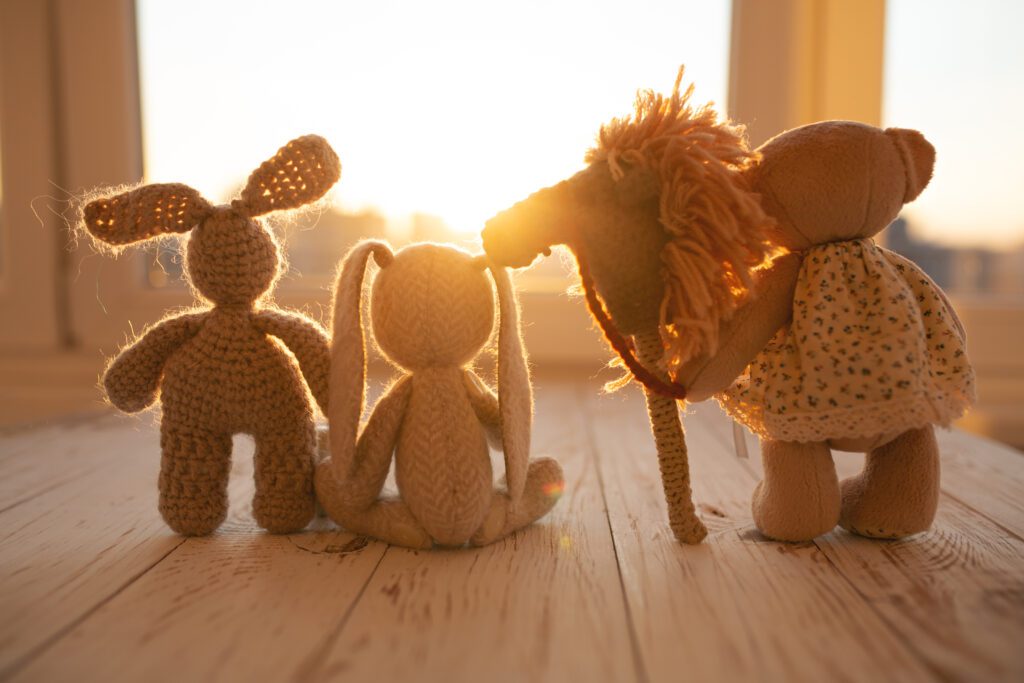How to Get Rid of Sentimental Clutter | Storing Sentimental Items During the Festive Season
Making Space for Memories Without Losing What Matters
Old birthday cards, kids’ artwork, vacation souvenirs, boxes from loved ones who have passed — sentimental items carry so many stories that it can feel almost wrong to let them go. Over time though, those meaningful mementos can quietly turn into sentimental clutter, taking over closets, basements, and spare rooms.
The goal isn’t to “throw away your memories.” It’s to keep the pieces that truly matter, store them in a way that feels respectful, and let go of the rest so your home feels lighter, calmer, and easier to live in.
This guide will walk you through how to get rid of sentimental clutter step by step — with gentle questions, practical sorting tips, and smart storage ideas to protect the items you decide to keep.
Step 1: Define What Sentimental Clutter Looks Like for You
Everyone’s sentimental clutter looks a little different. For some, it’s boxes of holiday decorations and school projects. For others, it’s inherited furniture, stacks of photo albums, or shelves of gifts they never really loved.
Start by noticing where sentimental clutter is hiding in your home. Common hotspots include:
- Overstuffed closets filled with old coats, costumes, or clothes that “might fit again someday.”
- Bins of children’s artwork, schoolwork, and crafts from years ago.
- Drawers packed with greeting cards, programs, ticket stubs, and letters.
- Inherited items you feel guilty donating, even if they don’t fit your space or style.
- Decor you only bring out once a year that now takes up too much room.
Simply naming what feels sentimental and overwhelming is the first step toward changing it.
Step 2: Set a Gentle, Doable Plan (Not a One-Day Purge)
Sentimental clutter is more emotional than regular clutter, so trying to “fix it all in one day” usually backfires. Instead, create a small, realistic plan that lets you move at a comfortable pace.
To keep it manageable:
- Choose one category at a time: cards, kids’ artwork, keepsake boxes, holiday décor, or inherited items.
- Set a time limit: 20–45 minutes is enough for real progress without emotional burnout.
- Use a simple sorting setup: “Keep,” “Share,” “Donate/Sell,” and “Recycle/Trash.”
- Pair it with something comforting: play calm music, light a candle, or make a warm drink.
If you like working with a daily structure, you can also adapt the 30 Bags in 30 Days declutter challenge just for sentimental items, filling one small bag or box at a time.
Step 3: Separate the Memory from the Item
One of the hardest parts of getting rid of sentimental clutter is feeling like you’re “throwing away” a person, a season of life, or a special moment. The key is to remember this: the memory lives in you, not in the object.
When you feel stuck on an item, try asking:
- What exactly does this remind me of? A person? A place? A specific moment?
- Do I need this specific object to keep that memory?
- If this disappeared tomorrow, would I even notice?
For items you don’t need to keep physically, you can still honor the memory by:
- Taking a photo before you let it go.
- Writing a short note about why it mattered, then releasing the item.
- Creating a digital album for old cards, kids’ projects, or bulky souvenirs.
This helps you keep the story and let go of the stuff.
Step 4: Choose Your “Keeper” Categories
Not everything sentimental should go — and not everything should stay. Before you start sorting, decide what kinds of sentimental items you truly want in your life going forward.
You might keep:
- Everyday sentimental: jewelry you wear, a blanket you use, a mug you love.
- Display pieces: framed photos, a favorite piece of art, one heirloom that suits your home.
- Story items: a small number of items that help you tell family stories to kids or grandkids.
At the same time, it’s okay to let go of:
- Duplicates (five nearly identical souvenirs from the same trip).
- Items connected to difficult seasons you’re ready to move past.
- Things you’re keeping out of guilt rather than genuine love.
Think of yourself as a curator, not a storage unit for every object that has ever meant something.
Step 5: Set Clear Limits for Keepsakes
Without limits, sentimental clutter grows quietly and quickly. Giving yourself a clear boundary actually makes decisions easier.
Try one of these ideas:
- Memory box rule: One box per person, per season of life (for example, “Childhood,” “School Years,” “Travel”). When the box is full, something has to come out before something new goes in.
- One-item-per-memory rule: Instead of keeping an entire stack of programs or every shirt from a sports team, choose one favorite piece that represents that time.
- Display or store rule: If it’s special enough to keep, ask if it’s special enough to display. If not, it goes in a clearly labeled memory box — not back into random closets.
Limits aren’t about being harsh; they’re about making sure what you keep actually has room to be appreciated.
Step 6: Give Sentimental Items a New Life
Letting go feels easier when you know something will be useful, loved, or appreciated in its next home.
Instead of putting everything in one big donation bag, think about:
- Passing items along: Offer heirlooms, photos, or special pieces to relatives who might treasure them.
- Donating where it matters: Clothing, décor, and books can support local charities, shelters, schools, or community groups.
- Upcycling: Turn old t-shirts into a quilt, photos into a scrapbook, or jewelry into a framed shadow box.
When you send an item on thoughtfully, it stops being “clutter you failed to deal with” and becomes something you intentionally put back into the world.
Step 7: Store the Memories You Keep with Care
Once you’ve edited down sentimental clutter to the pieces you truly want, the next step is storing them so they’re protected and easy to revisit — not buried and forgotten.
Smart storage tips for sentimental items:
- Choose the right containers: Use sturdy, high-quality bins instead of flimsy boxes that can collapse or attract moisture.
- Label clearly: Instead of “Misc,” use labels like “Grandparents’ Photos,” “Kids’ School Keepsakes,” or “Holiday Keepsakes.”
- Protect delicate items: Wrap fragile pieces in acid-free tissue, bubble wrap, or soft cloth.
- Keep paper and photos off damp floors: Store them on shelves, not directly on concrete.
- Use climate-controlled storage when needed: For photos, letters, and heirlooms, consistent temperature and humidity make a big difference.
If you’ve run out of safe, comfortable space at home, a secure, climate-controlled self storage unit can act like an extension of your home — especially for items you want to keep but don’t need to access every day.
Step 8: Create Simple Rituals for Letting Go
Because sentimental items are emotional, it can help to mark the moment when you release them. A small ritual turns “getting rid of stuff” into an act of gratitude and closure.
You might:
- Take a photo of the item and say a quiet “thank you” before donating or recycling it.
- Write a short note about what this item represented, then keep the note and let the object go.
- Share the story behind the item with a friend or family member before parting with it.
These small gestures remind you that you’re not erasing your past — you’re honoring it, then making room for what comes next.
Step 9: Build New Habits So Sentimental Clutter Doesn’t Creep Back In
Once you’ve done the work of clearing sentimental clutter, a few small habits can help you maintain that lighter feeling.
Try adding one or two of these into your month:
- Set a “story limit” at events: Keep only a few items from each celebration or trip instead of everything.
- Use a temporary “memory basket”: Collect sentimental items in one spot, then sort it once a month.
- Do a seasonal sentimental review: As holidays, birthdays, or school years end, decide what truly deserves a long-term place in your home.
- Pair it with bigger decluttering goals: Use guides like the decluttering plan or 30 Bags in 30 Days challenge to stay on track.
Over time, these habits turn “once-a-year emotional cleanouts” into simple, regular resets.
Step 10: Let Self Storage Help You Live Lighter
Sometimes the hardest part of sentimental clutter is feeling like you have only two choices: keep everything in the house or get rid of it completely. Self storage offers a helpful middle ground.
A secure storage unit can:
- Hold heirlooms and keepsakes you’re not ready to part with but don’t want crowding your main living areas.
- Keep seasonal décor, holiday collections, and family photo archives safe and organized.
- Give you space to sort gradually instead of rushing big decisions during a busy or emotional season.
By moving some sentimental items into a climate-controlled storage unit, you create breathing room at home while still protecting the things that matter most.
Clearing Space for the Memories That Matter Most
Getting rid of sentimental clutter isn’t about being less loving or less nostalgic — it’s about giving your favorite memories room to shine. When your home isn’t crowded with boxes and stacks of “maybes,” it becomes easier to find the pieces you truly treasure, tell the stories you want to pass down, and enjoy your space in the present.
With a gentle plan, clear limits, and thoughtful storage, you can hold onto what matters most and let the rest go with gratitude. Your home becomes lighter, calmer, and more reflective of the life you’re living now — not just the one you’ve already lived.





